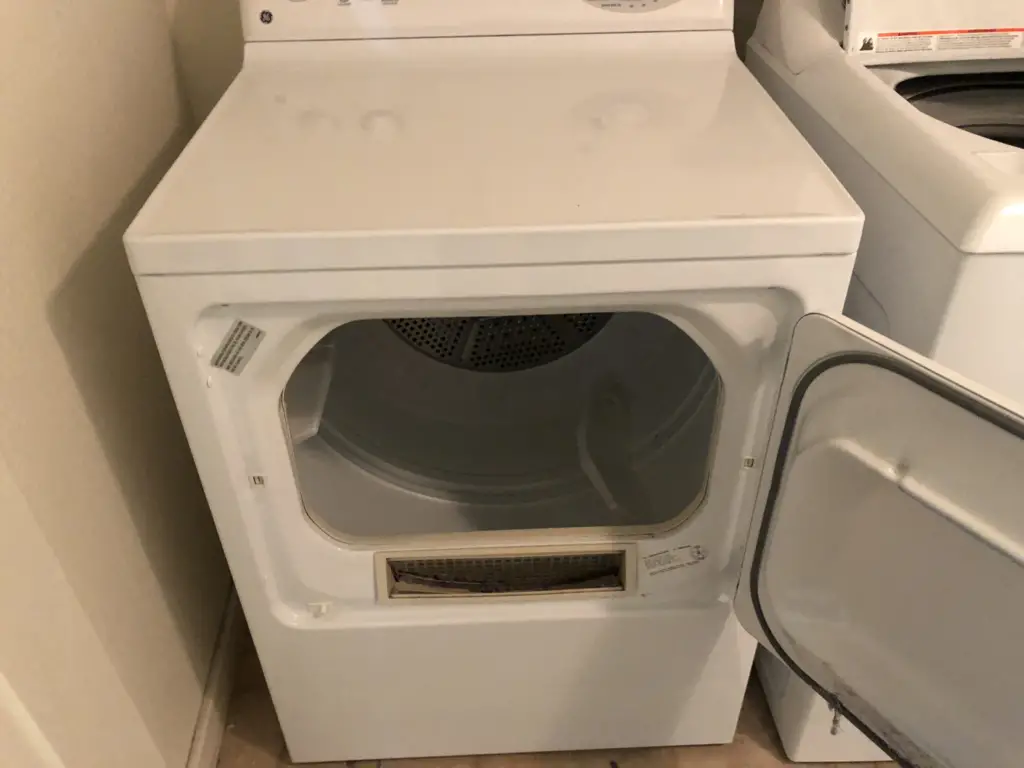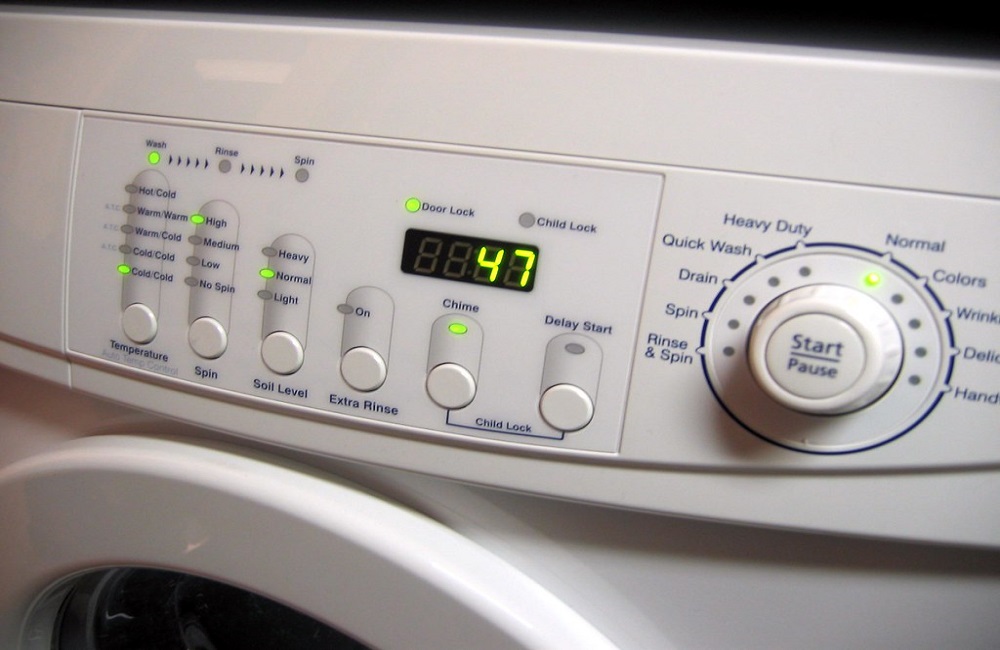If you notice water accumulating in your dryer, it can be a bit concerning. But don’t worry, it is a common problem that many homeowners face.
There can be several reasons behind the water accumulation in your dryer, and in this blog post, we will discuss the most common causes of this issue, and how to prevent it in the future.
Why Does My Dryer Have Water In It?

Firstly, if your dryer has water in it, it could be due to a clogged vent or duct. Over time, lint and debris can accumulate in the dryer vent and restrict airflow, causing moisture to condense inside the dryer.
This results in water dripping onto the clothes and creating a puddle in the dryer. To fix this issue, you must clean the dryer vent and duct regularly and remove any lint buildup. You can clean these yourself with a dryer vent cleaning kit, or you can hire an expert to do it for you.
Secondly, if you have a gas dryer, the water in the dryer could be due to a faulty gas valve. When the gas valve fails to shut off correctly, water can build up in the valve assembly and leak into the dryer during a cycle.
This can also happen if the gas line has a small leak. A gas leak is hazardous and requires a professional to handle it. Therefore, you must get an expert to inspect your gas dryer to resolve the issue.
Thirdly, if your dryer has water in it, it could be due to a defective drum seal. The drum seal, which rests between the drum and the frame, helps create a seal, keeping moisture inside the dryer while it dries your clothes.
It can wear out over time, causing water to leak out of the dryer. To fix this issue, you must replace the drum seal, which is a simple but delicate process that requires a skilled technician.
Fourthly, it is possible that your dryer has water in it because of overloading it. Overloading a dryer means that there is too much fabric in the dryer, which prevents the dryer from drying the clothes correctly.
The moisture from the wet clothes will condense inside the dryer and settle on the floor. Therefore, it is important to read the manufacturer’s instructions to know the maximum load the dryer can handle.
Lastly, if your dryer has water in it, it could indicate a more severe problem such as a faulty control board or heating element. In such cases, the best option is to consult a professional technician to have a thorough inspection and repair.
How To Fix This?

Check the Ventilation System
The first thing you should check is the ventilation system of your dryer. Ensure that the vent is clear and no debris or lint has clogged it. You can use a vent brush or vacuum cleaner to remove any clogs. Also, ensure that the vent tube is securely attached to the back of the dryer and the outside vent. A loose vent can allow moisture to enter the dryer and, thus, cause water accumulation.
Check the Moisture Sensor
If your dryer has a moisture sensor, it might be the culprit behind the problem. The sensor is responsible for detecting humidity levels inside the drum and stopping the dryer once the clothes are dried. However, if the moisture sensor is dirty or malfunctioning, it may cause the dryer to keep running, leading to water accumulation. You can clean the sensor using a soft cloth and some rubbing alcohol. If cleaning does not solve the issue, contact a professional technician to check or replace the sensor.
Check the Drain hose
The drain hose is responsible for carrying the water out of the dryer and into the drain. Make sure that the hose is properly connected to the back of the dryer and the drain outlet. Also, inspect the hose for holes or kinks that may prevent water from flowing out. If you find any damage, replace the hose.
Check the Drum
Inspect the drum of your dryer for cracks or damage that may allow water to leak. If you find any, replace the drum or call a professional technician to fix it. Also, check the seal around the door to ensure that it is free from damage and fits tightly.
Check the Condenser Unit
For condenser dryers, water accumulation may result from a clogged condenser. Hence, you should clean the condenser unit regularly. Refer to the manufacturer’s manual for instructions on cleaning the condenser. Ensure that you clean the unit thoroughly and replace it if it’s damaged.
Will My Clothes Dry If There Is Water Inside My Dryer?

Firstly, it’s important to understand how a dryer works. Dryers use a combination of heat, airflow, and tumbling action to remove moisture from clothing and other fabrics. When clothes are wet, the dryer’s heating element heats up the air inside the drum.
This hot, moist air is then circulated through the drum by a fan, allowing the wetness to evaporate from the fabric. The moisture-laden air is then expelled through the dryer’s vent system to the outside of the home, and fresh, dry air is drawn in to continue the process.
If there is water inside your dryer, it can disrupt the appliance’s normal drying cycle. Depending on how much water is present, it can cause the heating element or other electrical components inside the dryer to short circuit, leading to potential safety hazards.
Furthermore, any water in the drum can act as a barrier between the heat source and your clothes, causing them to take longer to dry or resulting in wet spots.
Another issue to consider is the potential for mold or mildew growth. If you’ve ever left wet clothes in the washing machine for too long, you know how quickly mold can set in. The same principle applies to a damp dryer – any water left inside can lead to mold growth, which can be harmful to your health and difficult to remove.
Should You Replace Your Dryer If It Starts To Leak?
The answer to this question is not a simple yes or no. The first thing you need to do is to evaluate the severity of the leak. If you notice small drips of water coming out of your dryer, it might be a minor issue that you can fix on your own.
Often, a small leak can be due to a clogged vent or a loose connection. In that case, try tightening the connections to see if it stops the leak. But, if the leak is more significant and the water is pooling on the floor, it might be time to replace the dryer.
Another thing to consider is the age and condition of your dryer. If your dryer is relatively new, and you have not had any major issues with it, it might make sense to repair it. Replacing your dryer can be costly, and if you haven’t owned it for long enough, repairing it can be a more cost-effective solution. However, if your dryer is old and is showing signs of other issues, it might be time to replace it entirely.
If you decide to replace your dryer, you should consider factors such as the energy efficiency of the new dryer and your budget. Energy-efficient dryers can save you money on your utility bills in the long run. However, they can also be more expensive upfront. If you’re on a budget, you might prefer a less expensive dryer that might not be as energy-efficient.
Wrapping Up
Water accumulation in the dryer can occur due to several reasons. To prevent the problem, ensure dryer installation is correct, avoid overloading the machine, clean your dryer vent, and check your water supply line for leaks.
If you see standing water in your dryer, try to identify the root cause of the problem and take steps to fix it immediately. By following these tips, your clothes and dryer will stay in excellent condition for years to come, and you will not have to deal with the hassle of a wet dryer.

